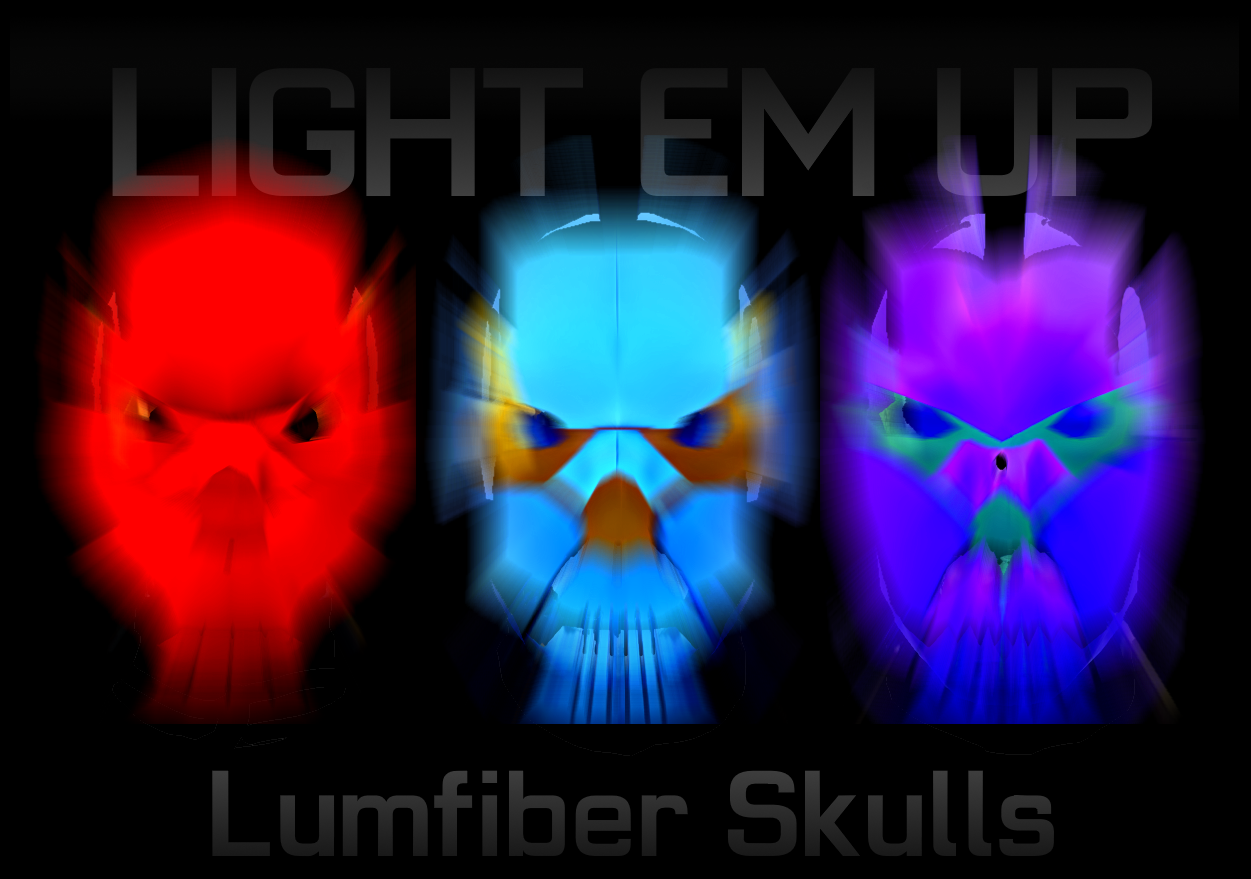-
Content Count
7228 -
Joined
-
Last visited
-
Days Won
63
Content Type
Profiles
Forums
Calendar
Everything posted by Binary
-
I've had the first two written for a while.I'll get some screenshots up in a bit.
-
Restart steam, same thing happened to me.Tutorials ovah hearFeel free to message me if you have any questions.
-
Part 2- Making your first game Already? Yep. This will take you through all the steps of creating, compiliing, and running a program. Part 1- Plan. Now this may not seem the most exciting part of programing, but it is fairly important. You usually want to have at least a starting point before you start. A adventure game will start out differently than a shooter. However, I don't mean filling a notebook with code for three months before you start (unless you want to...). Part 2- The object. For the sake of the tutorial we are going to make a simple room with balls bouncing around and changing color. The first thing you need is the ball. Tip: To do this, go to the top toolbar and click the "Create a new object" button. (its the blue circle.) IMAGE Next, we name it (see tip box)- lets call it obj_ball. Now that it has a name, lets give it a sprite- Do so by clicking the sprite dropdown, then clicking create new. Unless you already have one, then add it using the same method as the object, only this time you will use the sprite button. Then select it from the dropdown. IMAGE Ok, so its got a name and a face, now lets make it do something! We'll have it start out moving in a random direction, so set up a Create event. (New>Create) Then in the motion tab, click and drag the tile for movement in a direction. IMAGE into the left column. In the box that shows up, click all the arrows except the middle one. (This will cause it to choose between the chosen directions.) Then add a speed, say, 5. IMAGE Click the green arrow in the top right to save you object. Part 3-the room. Temporary prelude here, into the art that is playtesting (more on this later). Now, that certainly isn't all of out game by any means, but we have to make sure it works. So now create a new room (same a above with the other resources.) Then add about 10-15 balls on the blank area. IMAGE Now click the green arow to save your room. Part 4- Running the game.. Now we have a room to run our objects in, lets go ahead and see what she does, shall we? Press the green arrow in the corner, and your game should begin running. IMAGE If all goes well, all the balls should go off in different directions as soon as you start. Congrats! You just ran your first game! Part 5- Actions. now lets go ahead and finish it up. This really isn't all that exiting of a game at the moment, so lets have it do a few more things. First off, Lets create something to keep the balls from flying out of the room- a wall. Create a new object, preferably named obj_wall. In the properties, check the box that says "solid" IMAGE Press the check mark, and BAM you have a wall. Tip: Now we have to tell the obj_ball what happens when it hits obj_wall. In your ball object, create a new action, this time in the collision section, with obj_wall. We're gonna have the ball bounce off the wall when it hist it, so add the "Bounce against" action. Most of the settings are fine, but feel free to test them out. [iMAGE] (You can also duplicate this event for the ball object if you want them to collide with each other. Just make sure you change the "collide with" setting to "all". Save, then go back to your room. Make walls out of your object on the border of the room. (Tip- Holding SHIFT and dragging creates a line of the object.) Save, press play, and make sure it works. Ok, so now that the balls dissipate in a few seconds, lets have them do something. How about it changes the color every time it hits something? The method we'll be using (since you probably haven't bought the full version) is to change the sub-image if the sprite. So open your spirte back up, and copy and paste a few copies of your image, then color them different colors. [iMAGE] Save, then go to your obj_ball and open the create event. Add a sprite change action with these settings: [iMAGE] This selects the sprite that we want, but keeps it from cycligh through all the colors automatically by setting the image speed to 0. Tip: Now open the collision event with obj_wall. (and _ball if you want) Then add a sprite change action with these settings: [iMAGE] Same as above, with the exception of the image_index. This "random(image_number)" tell the game to select a random sub-image from the number of sub-images (image_number). If all goes well, when you save and press run, it should well, run. There you go! your first game completed!
-
Part 1- Using Game Maker Understand your engine. If this is your first ever experience ever making games, this is a great place to start. Game make is a powerful, but simple engine, and is very good at introducing techniques used later on in other methods. Basic components: Objects. These are the center of your games. They are the character, the enemies, the floors, the walls, they control the game rules, and they tell you when you pass the level. Think of them as robots- you give them a command (a event) and they preform whatever action you tell them to. Sprites. This is what the screen displays for an object. Without these, you would have a bunch of invisible thing running around. Each sprite is divided into sub-images, which are used to animate objects. Rooms. These are where all your objects go to make a game. Think of them as levels- this is where the actual "game" happens. They have a few notable settings and functions, like backgrounds and views. Sounds. No one likes a game that sounds like space- quiet. These are (obviously) the things you hear when playing the game. They are played when called upon by a object. Backgrounds. These are shown in the back of the room (or front) as, well, the background. They can be used as a whole image, or as tile sets. Advanced: These are not essential to a game, but certainly unlock a lot more programing power. Enable them in the options menu by selecting "Advanced Mode" Paths. Basically a line used to guide an object along a linear path. Can be curved or straight, and open or closed. You add data by placing points on the line. These are also accessed by objects. Scripts. These are used a bit later on when you are comfortable with coding (heck, I barely use 'em.) They save space when coding by allowing you to re-use codes without copying and pasting the whole thing. Fonts. Self explanatory, used for custom fonts in game, usually called by the draw event. Again, this is a very simple introduction to all the components to Game Maker. There is MUCH more to each of these, which will hopefully be explained more in-depth.
-
Depends on the edition, and what you want to do with it. For simply hoby-work, I would actually go with GM 8.1. It's significantly cheaper, but still full-featured, programming-wise. If you have the money and want to go a little further, I'd go straight to the Professional Version. (skip the "standard" or whatever it is, it's not worth it.) No resource constraints, plus you get the monetization and integration that comes with Studio. All in all, I'd recommend getting the free version, getting a grasp on the language, and go from there. If you a) enjoy it or think you can make money with it, then yes, it's worthwhile. The last thing I'd want to do is encourage someone to get it, and then they get frustrated and never touch it again. Speaking of which, would anyone be interested in some beginning tutorials?
-
However, it includes workshop and (if I'm not mistaken) steamworks integration, which is a HUGE deal. Cashing my paycheck today, expect to see some games on my workshop page soon! :woop:
-

you know my computer that recently got a broken graphics card?
Binary replied to Doopliss2008's topic in Techmoology
Good news: Power supplies are cheaper than graphics cards. -
-.-Its the Lua Rollercoasters
-
http://steamcommunity.com/sharedfiles/filedetails/?id=85202714That should be it.
-
The single best addon ever created in the history of anything.
-
I saw this one first, and didn't realize you were referring to Hertz's post.Spent 20 minutes trying to figure it out.
-
:headsplosion:
-
That is the best thing to do, especially for starting game development, or any kind of development in general. Don't be afraid to start small, experimental projects, or just flesh out game concepts outside of a full game. I've finished 1, maybe 2 proper "games," but I've built probably 100 smaller experiments and just general fun concepts before then. Get a concept? Start a blank program, and try it out. Does it work? Flesh it out a bit more. Is it fun? Add more concepts. Is it still fun? Finish it.
-
www.steamcommunity.com/sharedfiles/filedetails/?id=97163467I NEEEEEEEED it.
-
Ahhhh, alright. Fair enough, I'd accept that change.
-
One I just remembered:Two person puzzle game. One controls a robot, the other controls the room. They both have unique perspectives, the room being top down, and the bottom being third person. The person consoling the room must guide the robot to the exit by opening doors, raising platforms, ect.
-
But when was the last time you saw a damaged, unsapped sentry? That would be even more situational than sapper removal. A compromise I thought of earlier, what if it somehow "stunned" the sapper, so that the pyro can keep it up until the engineer gets there, but if they die, or leave it, the sapper keeps working.
-
*Watches thread, notebook in hand...*I'll post a few of mine later on.
-
That could work, but what does it do with sappers? I see far more utility in destroying suppers than repairing the sentry. If the engineer's dead, and the sentry damaged, chances are that a heavy just rolled through, and a pyro'd die just like the engineer's did.
-
Double post away!>Sharing just for the pyro part.
-
Ooooh, alright. I wasn't aware they were still updating DotA. So you mean that DotA 2 will reflect the balance changes from the DotA changelog then?
-
Is sad day! I'm really kinda sad to see him be done with TF2, I hope he keeps making stuff, though.
-
I am seriously confused in that case.
-
Wait, is this in the main game, or the test? Because I'm not seeing any documentaion on the wiki or anything.


